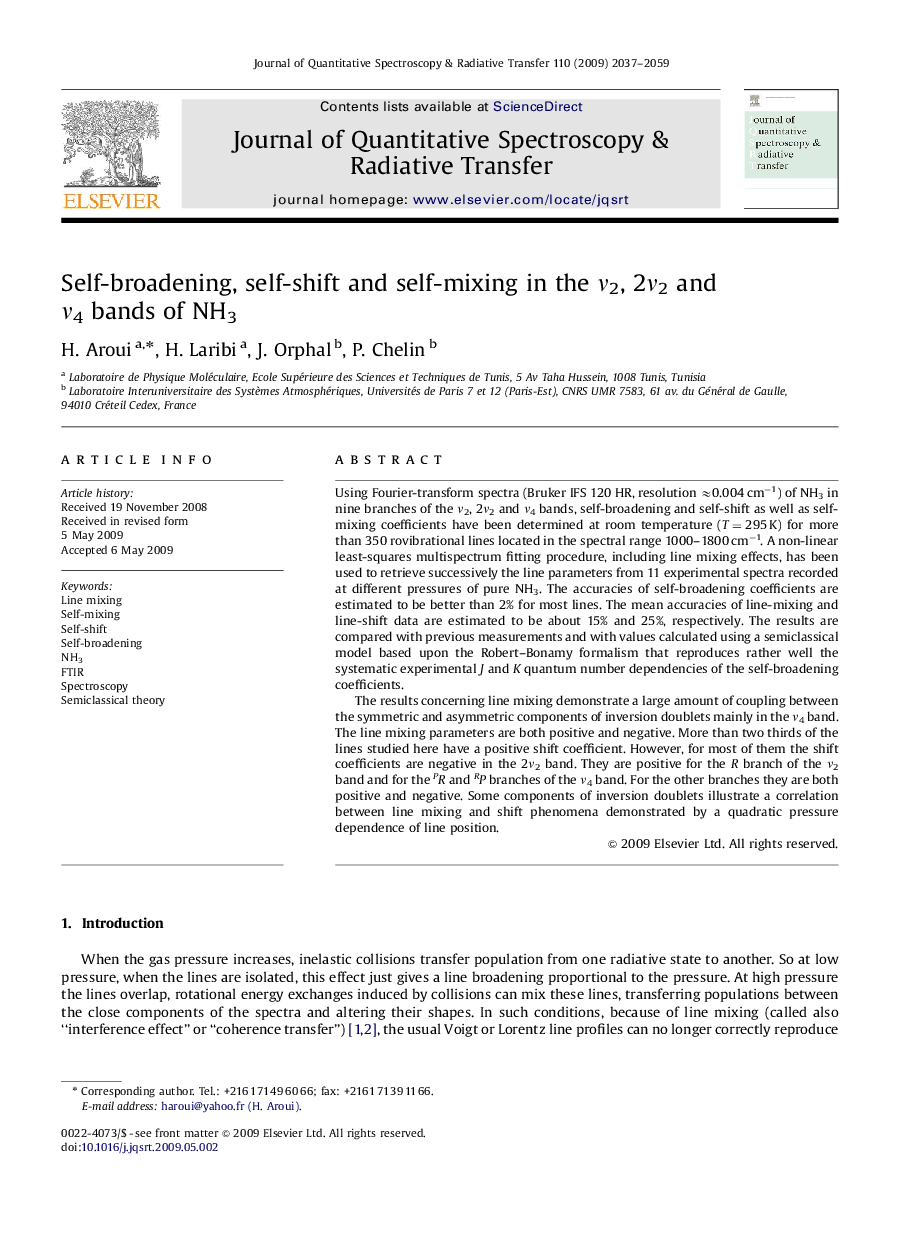| Article ID | Journal | Published Year | Pages | File Type |
|---|---|---|---|---|
| 5430016 | Journal of Quantitative Spectroscopy and Radiative Transfer | 2009 | 23 Pages |
Using Fourier-transform spectra (Bruker IFS 120 HR, resolution â0.004 cmâ1) of NH3 in nine branches of the ν2, 2ν2 and ν4 bands, self-broadening and self-shift as well as self-mixing coefficients have been determined at room temperature (T=295 K) for more than 350 rovibrational lines located in the spectral range 1000-1800 cmâ1. A non-linear least-squares multispectrum fitting procedure, including line mixing effects, has been used to retrieve successively the line parameters from 11 experimental spectra recorded at different pressures of pure NH3. The accuracies of self-broadening coefficients are estimated to be better than 2% for most lines. The mean accuracies of line-mixing and line-shift data are estimated to be about 15% and 25%, respectively. The results are compared with previous measurements and with values calculated using a semiclassical model based upon the Robert-Bonamy formalism that reproduces rather well the systematic experimental J and K quantum number dependencies of the self-broadening coefficients.The results concerning line mixing demonstrate a large amount of coupling between the symmetric and asymmetric components of inversion doublets mainly in the ν4 band. The line mixing parameters are both positive and negative. More than two thirds of the lines studied here have a positive shift coefficient. However, for most of them the shift coefficients are negative in the 2ν2 band. They are positive for the R branch of the ν2 band and for the PR and RP branches of the ν4 band. For the other branches they are both positive and negative. Some components of inversion doublets illustrate a correlation between line mixing and shift phenomena demonstrated by a quadratic pressure dependence of line position.
